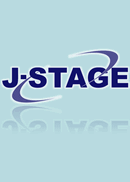Volume 55, Issue 3
Displaying 1-15 of 15 articles from this issue
- |<
- <
- 1
- >
- >|
-
Article type: Cover
2004 Volume 55 Issue 3 Pages Cover5-
Published: August 15, 2004
Released on J-STAGE: November 01, 2017
Download PDF (314K) -
Article type: Cover
2004 Volume 55 Issue 3 Pages Cover6-
Published: August 15, 2004
Released on J-STAGE: November 01, 2017
Download PDF (314K) -
Article type: Index
2004 Volume 55 Issue 3 Pages Toc3-
Published: August 15, 2004
Released on J-STAGE: November 01, 2017
Download PDF (34K) -
Article type: Article
2004 Volume 55 Issue 3 Pages 111-120
Published: August 15, 2004
Released on J-STAGE: November 01, 2017
Download PDF (1222K) -
Article type: Article
2004 Volume 55 Issue 3 Pages 121-128
Published: August 15, 2004
Released on J-STAGE: November 01, 2017
Download PDF (785K) -
Article type: Article
2004 Volume 55 Issue 3 Pages 129-137
Published: August 15, 2004
Released on J-STAGE: November 01, 2017
Download PDF (829K) -
Article type: Article
2004 Volume 55 Issue 3 Pages 138-144
Published: August 15, 2004
Released on J-STAGE: November 01, 2017
Download PDF (667K) -
Article type: Article
2004 Volume 55 Issue 3 Pages 145-155
Published: August 15, 2004
Released on J-STAGE: November 01, 2017
Download PDF (820K) -
Article type: Article
2004 Volume 55 Issue 3 Pages 156-168
Published: August 15, 2004
Released on J-STAGE: November 01, 2017
Download PDF (1085K) -
Article type: Appendix
2004 Volume 55 Issue 3 Pages 169-
Published: August 15, 2004
Released on J-STAGE: November 01, 2017
Download PDF (55K) -
Article type: Appendix
2004 Volume 55 Issue 3 Pages App13-
Published: August 15, 2004
Released on J-STAGE: November 01, 2017
Download PDF (66K) -
Article type: Appendix
2004 Volume 55 Issue 3 Pages App14-
Published: August 15, 2004
Released on J-STAGE: November 01, 2017
Download PDF (66K) -
Article type: Appendix
2004 Volume 55 Issue 3 Pages App15-
Published: August 15, 2004
Released on J-STAGE: November 01, 2017
Download PDF (66K) -
Article type: Appendix
2004 Volume 55 Issue 3 Pages App16-
Published: August 15, 2004
Released on J-STAGE: November 01, 2017
Download PDF (66K) -
Article type: Appendix
2004 Volume 55 Issue 3 Pages App17-
Published: August 15, 2004
Released on J-STAGE: November 01, 2017
Download PDF (66K)
- |<
- <
- 1
- >
- >|
